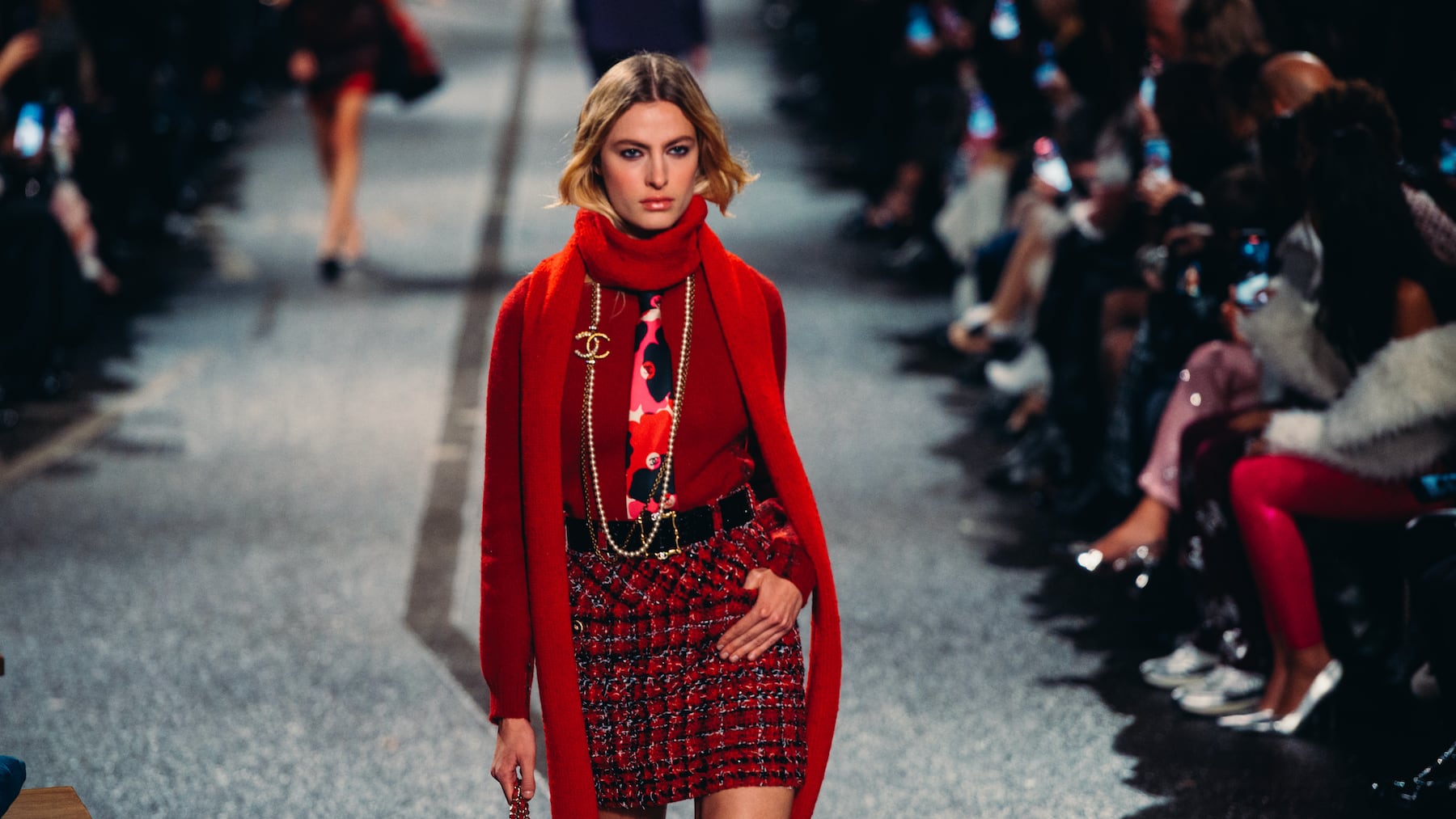
Chanel’s revenues rose 16 percent excluding currency shifts to $19.7 billion in 2023, the French luxury house said Tuesday. Price increases drove up sales by around 9 percent, while greater volumes accounted for the rest, chief financial officer Philippe Blondiaux said.
Demand for Chanel’s quilted leather handbags, Swiss-made watches and Bleu de Chanel fragrances held strong across categories throughout the year even as demand slowed sharply for many luxury rivals. “Double digit growth across all categories continued into the final quarter of 2023, where we delivered a top line growth of 14 percent,” Blondiaux said.
Operating profits rose 11 percent to $6.4 billion.
The record sales and profits represent “a testament to the desirability of Chanel’s creations and the sustained investment we’ve made in our brand, in creating the ultimate luxury experience for our clients and in supporting our people to grow and develop,” chief executive Leena Nair told BoF.
Privately-held Chanel, luxury’s second-biggest brand by revenue, has ramped up capital investments in recent years as it seeks to solidify its position in a turbulent market: upgrading and expanding its stores, internalising supply chains and converting more of its beauty business to retail after decades operating the division on a wholesale model.
“In the last decade, we have more than doubled our revenue; we have more than doubled our headcount. And in the last five years, we’ve doubled the size of our distribution network. So that’s a lot of change internally, and you’re operating in what is a rapidly changing context globally, which is complex. We see multiple crises in the world,” Nair said.
2023 capital investments of $1.2 billion included 47 additional stores, 31 of which were free-standing beauty and fragrance boutiques. Other new locations included revamped flagships for fashion, watches and jewellery in Milan’s Montenapoleone and Los Angeles’ Rodeo Drive, as well as expanding its “Chanel et Moi” after-sales service and repair network (more often referred to by clients as “Chanel spas”.
“My priority along with my leadership team is to continue protecting our differentiation and evolving as an iconic brand and business. And this means protecting the strength of our brand and cherishing what makes us different, as well as our freedom of creation,” Nair said.
Marketing investments rose 20 percent to $2.5 billion, resulting in recent efforts including the first fragrance ads fronted by new “Bleu de Chanel” spokesperson Timothée Chalamet and for “Coco Mademoiselle” face Whitney Peak, as well as a big-budget handbag campaign starring Brad Pitt and Penelope Cruz.
Online Discourse
Despite major investments and blockbuster results in 2023, the brand has faced criticism in 2024 as eye-popping price hikes appeared increasingly out of step with slowing economic growth and more frequent reports of quality issues. In March, prices for Chanel’s medium flap handbags surpassed €10,000, nudging ahead of many of Hermès’ Kelly and Birkin styles at a moment when TikTok was flooded with complaints of crooked stitches and loose hardware.
While the brand continues to “invest relentlessly” in improving its manufacturing, “the numbers for 2023 confirm that our consumers totally endorse the level of quality,” Blondiaux said. Recent runway collections have also drawn mixed reactions, including a May cruise outing in Marseille that was called out for its unflattering styling.
“Collections can be more or less successful, these things happen to any designer,” acknowledged Blondiaux, adding: “But since Virginie [Viard] took over from Karl…the Chanel fashion business has been multiplied by 2.2. The Chanel ready-to-wear business has been multiplied by 2.5, and the ready-to-wear business last year of Chanel grew by 23%.”
“I think it’s a testament to the quality of her collection, to her creativity,” Blondiaux added.
“Judging social media, campaigns, etc. is one measure — but when I look at measures of employee and customer satisfaction, for example, across all our boutiques, I see those numbers going up… When I look at brand equity studies that we do, we see the numbers going up,” Nair said. “But having said that, we always stay humble as a brand and are always willing to take feedback.”
Downturn Opportunity
Rival groups LVMH and Richemont both reported sales that fell slightly on a reported basis in the first three months of the year as luxury demand cools following a multi-year surge. Hermès outperformed the market, with revenues rising 17 percent.
“We cannot deny that 2024 will be a more challenging environment,” Blondiaux said, declining to comment further on the brand’s current trading.
Still, Chanel says it plans to invest through the slowdown, increasing capital expenditures by as much as 50 percent at a time when many rivals are slashing budgets. “This period of slowdown, as it’s been characterised by some of our competitors, will offer opportunities, whether it’s in terms of real estate, boutiques, vertical integration of our supply chain, people,” Blondiaux said.
Even amid a sluggish Chinese economy and with sales to Chinese nationals rebounding abroad with the resumption of long-haul tourism, Blondiaux flagged Mainland China as a focus for growth.
“We have today 18 fashion boutiques in China, while most of our competitors have over 45 or 50, which means China is still a place where we can continue to invest, which is what we’re going to continue to do,” Blondiaux said.


